
Preview of The Essex County Complete @ Top Shelf
May 25th, 2009 Posted by david brothersTitle kind of says it all, doesn’t it? Check out this preview of The Essex County Complete, including an introduction by Darwyn Cooke, at Top Shelf’s page.

Title kind of says it all, doesn’t it? Check out this preview of The Essex County Complete, including an introduction by Darwyn Cooke, at Top Shelf’s page.

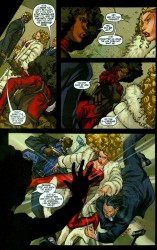

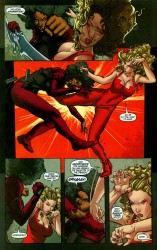
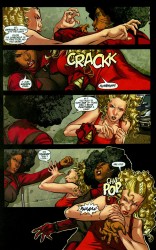
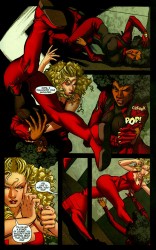
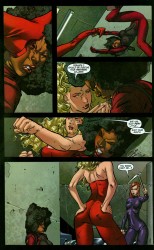
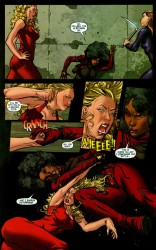
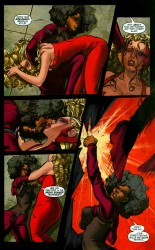

We took the plunge and recorded the inaugural 4thletter! Fourcast! this weekend. Esther and I sat down in my apartment and talked about comics for a while, and our gift to you is thirty-four minutes and five seconds of good stuff. I’m not 100% happy with the mix, as there are a few audio peaks spread throughout, but we can work those out as we go along.
We’re looking at a biweekly schedule for now, and bringing in a few surprise guest stars down the line. We also need to rope Gavin into the mix, but that’s a problem for another day.
We begin the first of many Fourcasts with a talk about Batman: Battle for the Cowl, Final Crisis Aftermath: Dance starring the Super Young Team, and what character really hooked us into comics.
If you want to subscribe, hit up the podcast-specific RSS feed or grab the normal one. Tell your friends, give us an iTunes review or three, and drop us some comments. If you want to subscribe on iTunes, click here! If you have suggestions or want to donate some music… drop me an email.

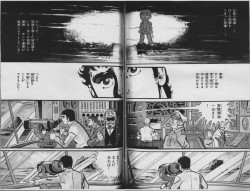
Garret sent over the link to a full scan of Hulk and thanked me for visiting his site. And, wow! It’s really interesting to see. I bothered a few Japanese-speaking friends until they agreed to help me figure out a few of details. The katakana for the title reads “Haruku.” Later in the volume, the logo treatment changes so that it reads “Haruku: Monsutaa Komiku.” “Hulk: Monster Comic.”
From what I and my lovely assistants managed to figure out of the story, it stars Dr. Araki, survivor of Hiroshima. Both of his parents died in the blast, and he’s come to Nevada to work on the gamma bomb. General Ross, Major Talbot, and Igor retain their names, but Rick Jones has been turned into Ricky Tenda. He’s got a Japanese mom and an American dad. Betty Ross is now Mitsuko, though Dr. Araki calls her Mitchan.
Read the rest of this entry �

No idea, but Gav told me to do this.
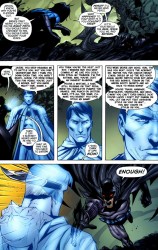
From the ever-classic rap battle.

Rafael Grampa’s Batman & Robin, that is. I found this via Sean Witzke, who found it via Grampa’s flickr.


We all know the story. Fan meets comic. Fan loves comic. Fan loses comic.
Not through cancellation!
As Emerson said, “Of all the ways to lose a comic, cancellation is the kindest.”
Or something like that.
No. Sometimes you lose a comic because the artist changes, or the writer changes, or there is some editorial futzing with it.
Sometimes though, one just falls out of love. Sometimes a character that seemed fun or cool or exciting gets unbearable when the same flaws are brought to light again and again.
Sometimes I start out singing the praises of a certain writer, and then something happens. I have to say that they’re having a bad story arc. Or some evil editor forced them to write a certain thing. Then I say the book isn’t a good match. Sometimes I love a certain storyline, but then come to realize that that storyline, that ‘fresh, new take’, that idea, is all they are capable of. In the end, I have to admit that I’ve fallen out of love with the writing.
Or the artist. Oh boy, how many times have seen some new artist’s work and loved it, only to look at the issue six months later and scream, “WHY are you drawing a line there? There is no part of human anatomy that would make that line go there! You’re just doing it to be ‘artistic.'”
I think it’s this gradual disenchantment that makes for the bitterest of comics fans. If you think some idea is stupid, or have low expectations at the beginning, you develop a healthy detachment. But when you start out loving something and have high hopes for it, only to see it mutate into something you’re embarrassed to read – that’ll make you post some angry rants on message boards.
So. Post your tales of love and loss below. Come on. Get it all out. Just . . . clean up, after.

(Gavok note: This is an article I wrote for PopCultureShock a while back. Because I’m distracted by my inability to defeat Title Defense Piston Hondo at the moment, I figured now would be a good time to start posting some of these where they belong: at 4th Letter. I snipped the first few paragraphs, since it was more of an introduction and you already know me. Which reminds me, we need to hang like old times. Let’s hit the roller rink this Sunday. They have a Wrestlefest arcade machine there. It’ll be fun.)
Allow me to introduce you to what may be the first comic I’ve ever owned. I’m not certain if I owned this before or after I was given a copy of that Luke Cage anti-smoking comic in health class. In fact, I’m really not certain why or how I had this in the first place. All I recall is one day owning a copy of The Adventures of JELL-O Man and Wobbly.
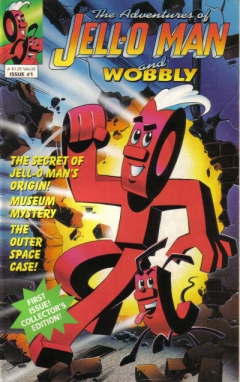
Nobody else seems to remember JELL-O Man, I’m afraid. He was a brief JELL-O mascot during the introduction of their Jigglers. As you can see from that cover, JELL-O Man’s dog Wobbly was created by the J, as JELL-O Man himself was the E, L, L and O mixed together to create some kind of horrid demon freak never meant to walk God’s green Earth. I also notice that they each have a dash for a nose. Where’d that extra dash come from?! It’s questions like this that answer why there was never a second issue. Brevoort would’ve been all over that shit.
Other than a kid’s cookbook, JELL-O Man and Wobbly were featured in a couple animated commercials that I seem to recall as being pretty sweet. I can’t know for sure until somebody puts them on YouTube.
This comic has three stories, a rather huge insert that I’ll get to in a bit, a couple pages of games and seven different JELL-O advertisements. Our first story, The Outrageous Origin of JELL-O Man and Wobbly is written by Michael J. Pellowski, a regular on Archie Comics and its spin-offs. Richard Howell does all the art here, except for Ken Steacy, who does the cover and advertisements.

All right, I was the very last person in the world to read Blackest Night, but as I was going through the explanation of all the different Lantern Guilds at the end of the book I stumbled across this:
The blue ring charges a green ring and de-charges a yellow.
Is it just me, or does anyone else hear a pair of dice rolling when they read a phrase like that?
I think that the various Lantern Guilds at war with each other would make fantastic role-playing games.